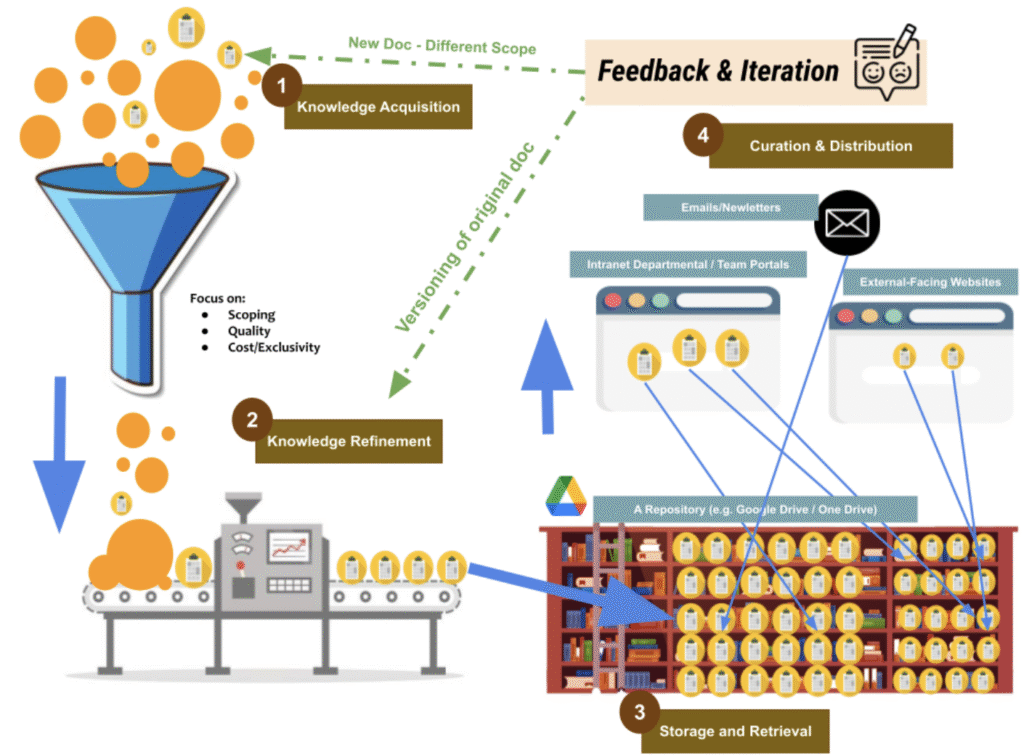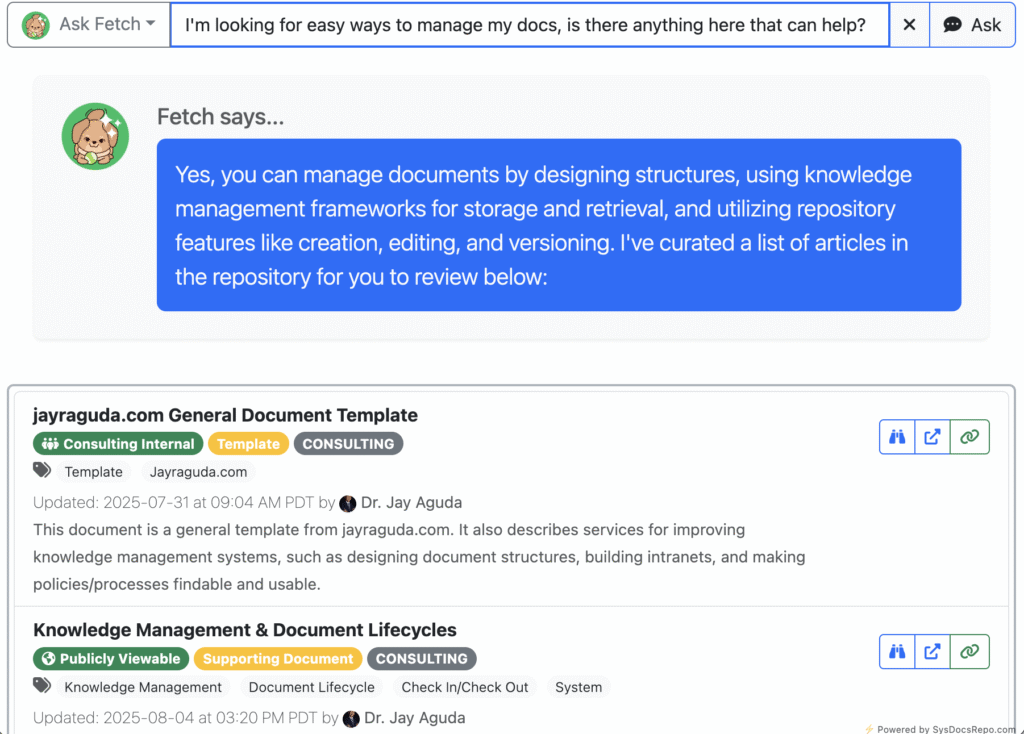In K–12 districts, knowledge walks out the door every time a team member moves on. Additionally, every turnover, policy update, or system tweak risks erasing valuable know-how—unless you capture it systematically. A structured knowledge management framework combats this by systematically capturing vital information—from IT procedures to curriculum playbooks—and making it findable and actionable.
Get My Free WhitePaper here: https://sysdocsrepo.com/doc?page=sysdocs&docId=1u2DNQrlSaeUP_iuFviJCu75JpeTsbi8B4iGY_b_zjPY
The Four Phases of the Knowledge Management Framework

1. Acquisition: Capture What Matters
Begin by pinpointing high-leverage content—project post-mortems, SIS configuration guides, and compliance checklists—that prevents future firefights. I recommend a simple “KM kick-off workshop” with stakeholders from IT, curriculum, finance, and transportation to brainstorm “pain points” and map critical information sources. Use intake templates to collect raw materials: meeting notes, expert interviews, and existing docs.
2. Refinement: Standardize & Tag
Raw content is noise until it’s structured. Apply clear naming conventions (“SOP—Help-desk Escalation_v2”), standardize terminology, and embed metadata tags—department, process phase, and audience—to make retrieval intuitive. In my workshops, we co-author glossaries and tag taxonomies that mirror your district’s org chart, ensuring everyone speaks the same language. Peer reviews by subject-matter experts catch inaccuracies before they propagate.
3. Storage & Retrieval: Centralize and Search
A KM system is only as good as its findability. Consolidate refined documents in a searchable repository—ideally a cloud-hosted platform with full-text search, faceted filters, and role-based access. Organize content into logical “knowledge hubs” (e.g., “Network Operations,” “Curriculum Resources,” “HR Processes”). I often recommend using document version control so teams can track changes and roll back if needed.
4. Curation & Distribution: Embed Knowledge in Workflows
Your KM framework lives when it’s integrated into daily tools. Embed links to relevant SOPs within ticketing systems, add “Did you know?” tips to internal newsletters, and surface quick-reference cards on intranet dashboards. Automate alerts when documents age out—from quarterly reminders to annual policy reviews—so content stays fresh. Encourage feedback directly in the platform: a simple “thumbs up/down” can flag gaps or signal high-value docs.
Continuous Feedback: Fuel the Next Cycle
A true learning organization loops user insights back into the framework. Leverage built-in analytics to see which docs get viewed—and which languish. Solicit periodic surveys (“Was this procedure clear?”) and tag feedback items for refinement. This dynamic cycle keeps your knowledge management framework responsive to changing needs, rather than a static archive.
Final Thoughts
Implementing a knowledge management framework builds resilience, accelerates onboarding, and reduces duplicated effort—turning scattered information into a competitive edge. It transforms scattered know-how into an evergreen resource, reducing ramp-up time, minimizing repeated mistakes, and empowering teams to focus on innovation.
From Framework to Function: How SysDocs Repo Makes Knowledge Management Work

Every organization struggles with documentation:
“Where’s the latest version?”
“Did someone update this?”
“Who even owns this file?”
That’s why I developed the Knowledge Management & Document Lifecycles framework—rooted in practical needs, not theory. But frameworks need infrastructure. That’s where SysDocs Repo comes in.
Built on Google Drive and Cloud, SysDocs Repo simplifies the entire document lifecycle:
- Register docs with purpose
- Assign review dates so nothing goes stale
- Track versions with audit clarity
- Keep control—everything lives in your own workspace
But here’s the real gamechanger:
🤖 Curation is no longer manual.
With AskFetch AI, users can simply ask questions—and Fetch instantly recommends or answers using your docs. It’s like having a district knowledge officer on call, 24/7.
Forget building a wiki or internal site.
Forget retraining your team.
Just Ask Fetch.
Explore more at 👉 SysDocsRepo.com
Work with Me!
As a Strategic IT & Operations consultant, I partner with districts to operationalize this knowledge management framework—designing repo structures, crafting metadata standards, and facilitating workshops to embed KM practices into daily workflows.
Love these insights? Subscribe to Dr Jay’s Weekly K–12 Systems Spotlight on LinkedIn:
https://www.linkedin.com/build-relation/newsletter-follow?entityUrn=7336430863393411075




